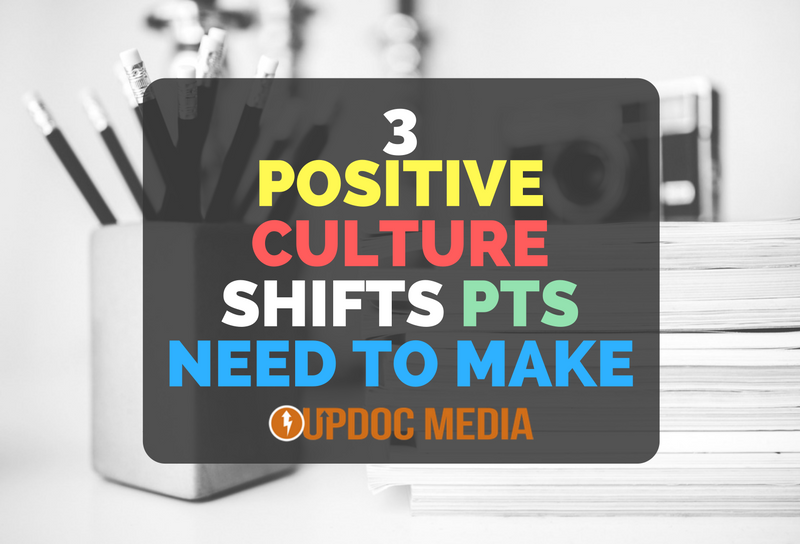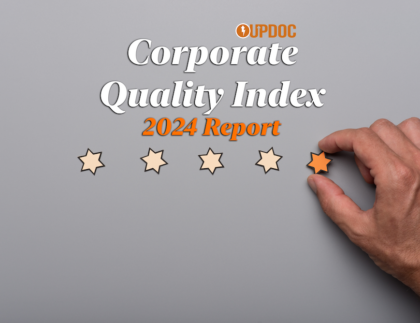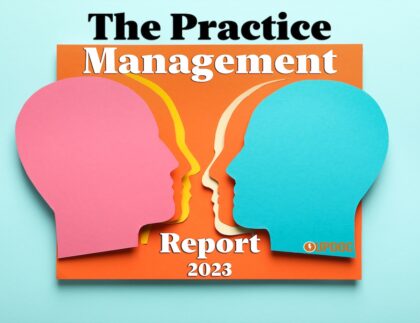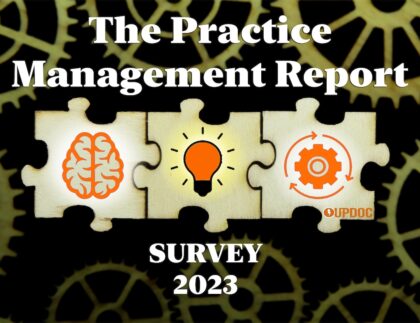
Here are…!
3 Positive Culture Shifts PTs NEED To Make
1. Manage With Incentive
Several days ago, Dr. Rich Severin asked a great question on Twitter:
Sunday evening musings. How would you #solvePT? #dptstudent #freshPT #EvidenceBasedPractice pic.twitter.com/hSS1z1Ap6m
— Rich Severin DPT CCS (@ptreviewer) November 6, 2016
Many ideas were thrown out there; all very good, from pride to management to mindset. While this idea may revolve around my formal business background, I simply find it ironic that in healthcare, we are so great at promoting the tracking outcomes, implementing best practice, and using evidenced based practice. However, we are terrible at examining ourselves through the same lens.
We are all too comfortable with the status quo of employee raises for loyalty, time served, or experience in the field… basically, a raise no matter what… save for the meeting of human resource minimal requirements (ie. be nice on the playground). This is something that only perpetuates, if not encourages mediocrity.
I suggest that implementing systems which would manage with incentive would better us all.
After all, without incentive, the human nature to excel becomes blunted. There are many available management systems to not only manage with incentive but to grow excellence within a company culture. I’ll offer three:
- Performance Based Merit Raises
I don’t mean the minimal HR performance of “be nice.” I mean, actual performance: unit production, patient satisfaction, NPS scores, value added goals, etc. - Tiered Profit Sharing Compensation
There are several models available; the one I like best protects the employer from underproduction & rewards the employee for super-production. It takes time out of the picture & looks just at the fact of value contribution. It’s a win-win. - Weighted Earning Matrix Compensation
For organizations that like a bit of depth, complexity, and/or sophistication… like a fine scotch… weighted matrices balance out a multi-factorial approach to making sure employees are paid, rewarded, promoted, and recognized in a prompt & fair fashion while keeping long term growth in mind for both teammates and the team as a whole.
If you’re an owner or manager and these solutions are of interest, please feel very welcome to email me or give me a text message and/or call.
2. Up Our Advocacy Game
Physical Therapists own 7-8% of the musculoskeletal market. This has been validated by numerous sources and isn’t our number at UpDoc Media. In fact, we set out to validate this statistic by going straight to the public for their opinion on what they would do if they had low back pain – it’s a fascinating watch & you should know that out of the many people we asked, only one person said they’d go see a Physical Therapist.
The truth is, we need to up our game at the local, state, and national level in advocating for our patients by advocating for ourselves. If only 8% of the general healthcare consumer population ends up seeing a Physical Therapist for musculoskeletal concerns, we are missing out on 92% of the population who very much NEED OUR HELP! This is a terribly and massively underserved need in our society; we are doing a disservice to ourselves and our customers by not upping our advocacy game.
Better practice acts, direct access, CMS physician status, and the right to be a completely unrestricted healthcare provider as physical therapists is something that serves the best interest of the public.
WE, need to make that happen.
3. Stop Tearing Ourselves Down
Fighting over 8% of a piece of pie is… pretty sad. Especially when there’s 92% of the pie that doesn’t even know we physical therapists & physical therapist assistants exist. This is why fighting over that 8% is so petty & self destructive. If we’re all panicking about how we’re getting paid less from insurance companies, we need to capture more marketshare — not bicker over the small share we have.
We need to collaborate and fight along side one another to start capturing the 92%!
In our age of digital media, everyone watches everything… even if they don’t say a word. It’s like going to a grocery store and hearing an uncomfortable family argument gone way too public. That’s what professional infighting sounds like to the healthcare consumer.
So, how do we go about it?
My suggestion is:
- Jump on social media. Surely, you use Facebook or Instagram. Also, consider Twitter and Snapchat (here are some clinic tips for Snapchat). The audience that needs to know about all the benefits physical therapists bring to the table are our friends, our families, and our local communities. In fact, there are those who feel so passionately about leveraging social media to positively influence the healthcare market that APTA’s 2017 Combined Sections Meeting has a session titled #SocialPT: Transforming Society Through Social Media — to which, yours truly, will be one of the speakers 😉
- Get into your communities. In almost every town I venture into, the malls typically have regular mini-fairs or street-fairs where there is always a representative from a fitness gym, a chiropractor, and an acupressurist or even a TENS sales representative. I see this a the local and regional level too; even at state fairs. We, physical therapists, don’t typically invest the extra time to integrate with the community… to go where they go, to speak the language they speak, to share the interests they share. Rather, we’re happy to serve them in our clinics, then go home in peace. This 9-5 Status Quo Mindset is NOT ENOUGH and will bury our profession in the dark ages in the coming times of healthcare disruption.So! Get together and collaborate. It may be too pricey to host a booth at the county fair on your own. However, if two or three clinic groups get together, you can create a collaborative booth. Surely, there is more than enough work to go around at a county or state fair level if just three businesses need share the leads generated from such an event. It’d definitely be more awareness than ever before.GO COLLABORATE! #BetterTogether
- Start Talking To Schools. A few years ago, I started to soap box the importance of adopting a primary care model akin to the dental model for the future of physical therapy. I feel this is now more critical than ever before. Dentists opted out of many things in healthcare trends that have benefited them over the recent history of their profession by staying autonomous. However, one thing they opted into was the education of children from K-12 on the importance of dental health.Physical Therapists have the same opportunity to impact K-12 generations at an untold level of high impact; that they understand the importance of physical health, their movement systems, and how this affects their enjoyment of life.Imagine the cultural impact on society, if the next 10 years of high school graduates know as matter of fact; that if they were ever to experience aches, pains, sprains, strange changes in balance, or anything else that affects their physical health & the way their bodies move… there is only one person to go to: their Physical Therapist.
How powerful would that be?! Perhaps it would even be considered… transformative.
If this post is striking near and dear to your heart & you are looking for solutions to change the culture within your immediate social & professional circles, please let me know! Having been involved in large scale corporate culture changes, organizational behaviors, and even involvement with Disney Institute strategies, I warmly welcome the opportunity to help change our professional culture for the better… step by step, one group at a time.
Until Next Time,
-Ben
 Ben Fung, DPT, MBA
Ben Fung, DPT, MBA
Co-Founder, COO, UpDoc Media
ben@devbox.updocmedia.com
C: 470-BEN-FUNG
Twitter: @DrBenFung
Snapchat: DrBenFung









